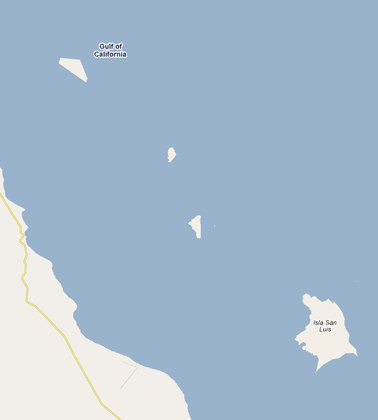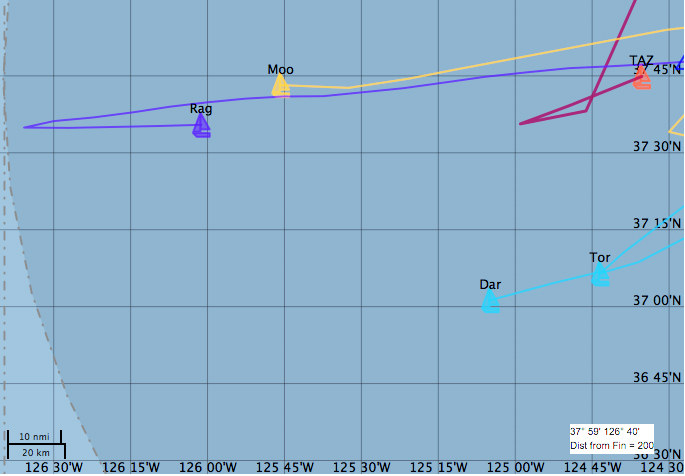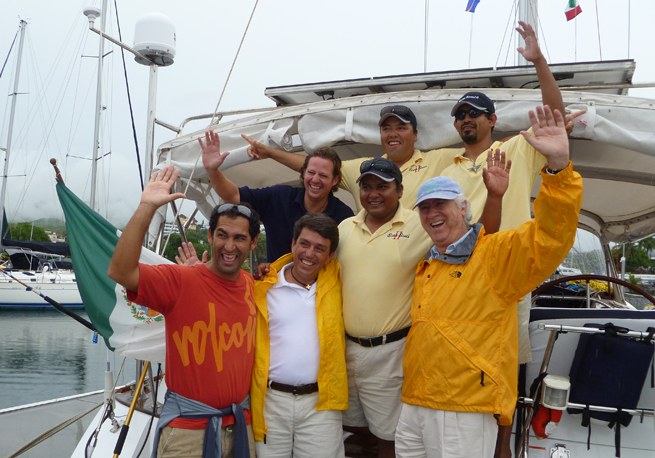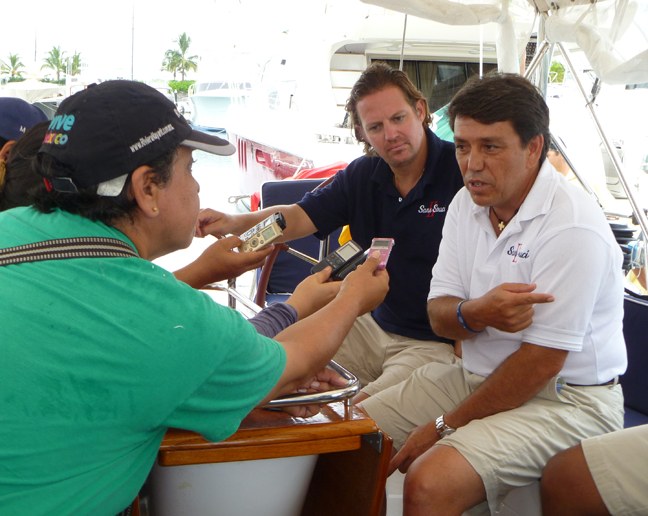
Seahorse Has Great Taste
©2011 Latitude 38 Media, LLC
For 34 years, Latitude 38 has been something of an anonomly among monthly magazines. Rather than a one-, two-, or even three-month lag between the time we wrap up an issue and the time it’s in your hands, it’s usually more like four or five days. That’s why we were surprised to find out that the cover of the current issue is nearly identical to that of the Royal Ocean Racing Club’s Seahorse Magazine. If you’re not familiar with it, UK-based Seahorse, although pricey here in the States, is worth every penny for the English-reading and technically-inclined grand prix racing fan.
We hadn’t seen their latest issue until reader Paul Popnoe wrote us yesterday: "I’m sure you saw the latest cover of Seahorse; who was first?" We’re not sure, but we know that Latitude Editor extraordinaire LaDonna Bubak picked out the photo on June 17, less than a week after it was shot by Guilain Grenier and just two weeks before the issue hit the streets. But the way we see it, it really doesn’t matter, because our cover is for the July issue . . . and Seahorse’s is for August.
Seven Men Missing in the Sea
As the survivors of Sunday’s tragic fishing boat accident just off Baja’s Isla San Luis — most of whom were fishing buddies from California — make their way home, the Mexican navy and the U.S. Coast Guard are continuing to search for seven missing passengers. Jonathan Carver, whose father-in-law Donald Lee of San Ramon is still unaccounted for, called to ask if we could put the word out to cruisers in the area to keep a sharp lookout, especially on nearby islands, as officials say the men could have easily survived the conditions and swam to shore. Normally, Mexican authorities would have called off the search after four days but yielded to pleas from the families of the men, as well as U.S. politicians, to extend the search.

The 115-ft charter fishing boat Erik, carrying 27 passengers and 19 crew, sank in the early hours of Sunday after a sudden storm capsized her. She’s lying in 200 feet of water, making it nearly impossible for the Mexican navy to search the hulk for bodies as they claim to not have the appropriate equipment for the task. So far only one of the 46 people aboard has been confirmed dead.
LongPac’ers Get Hammered
Twenty-seven boats started the Singlehanded Sailing Society’s LongPac Wednesday and, as of this morning, only four boats were still racing — all of them singlehanded entries. Bob Johnston’s J/92 Ragtime! was the first to touch 126° 40’W, and is 170 miles away from the Bay after a blistering outbound leg. The next closest boat is David Morris’ Wylie 31 Moonshadow, which has so far sailed a similar track and has about 50 miles to go before the turn. About 30 miles to the south, Tom Watson’s Pearson Triton Darwind, and Randy Leasure’s Westsail 32 Tortuga are still outbound with about 120 miles left to go, facing what’s likely to be a pretty unpleasant ride home due to their angle.

Much farther south, the fast boats in the 46th TransPac get going today from Pt. Fermin at 1 p.m., while the little guys have finally been able to pick up the pace, with the top five boats in Division six reporting 180- to 200-mile days.
Understanding Customer Wants and Needs
Pedro Fernandez de Valle, whose dream was to build the 400-berth Marina Riviera Nayarit in La Cruz, says he now has a much better understanding of his customer’s wants and needs. This after doing the Puddle Jump from Mexico to the Marquesas and Tahiti as one of an all-Mexican crew aboard his uncle Enrique Aldrete’s Jeanneau 54 Sans Souci II.

© Latitude 38 Media, LLC
"We left April 3 and arrived 20.5 days later in the Marquesas," Pedro said during an interview at the marina’s yacht club. "It was nice downwind sailing all the way, although we did have a gust as high as 35 knots and seas as big as 15 feet. Our biggest problem was with our furling mainsail. Halfway across, one of our crew had to go aloft to try to fix it. Thanks to the rolling sea, he got beaten like a piñata!" Pedro laughed in sympathy.
"The crossing was a very special experience for all of us," continued Pedro. "In addition to adventure, it gave us all time to think about ourselves and what we were doing with our lives. It also gave us energy to come back and continue our path in life, although each of us was coming back a little different than when we had left. As for myself, I didn’t want to come back so soon. I wanted to continue south."

© Latitude 38 Media, LLC
"And as a marina owner, I also found it very helpful to experience things from a boatowner’s perspective. After being away from land for a week or so, I now appreciate how important it is to be able to hit land and find the things you need. For example, nice bathrooms and showers, groceries, laundry service, a bank and the internet. You’ve been out of touch, and you want to get back in touch. And," he laughs again, "you want to do it the ‘American way’, which is right now."
Since the Marina Riviera Nayarit opened a few years ago, tenants have been clamoring for a pool to jump in after sailing or working on their boat in the warm tropical conditions. Pedro totally gets it now. "By the time the winter season starts in November, we’ll have a pool at our little beach club next to the water’s edge. We’ll also have a very casual place for cruisers to eat, drink and watch the sunset next to the pool and the ocean."
Of course, not all places — such as the remote Marquesas — are able to provide all these amenities. "There was no marina at Nuku Hiva," says Pedro, "and while the officials were very friendly, services were few and far between. For instance, we arrived with U.S. dollars, figuring we’d be able to exchange them for Central Pacific Francs. It turned out that the only place we could exchange money was at the Chinese market, where we’d have to buy small items with big bills to get some Central Pacific Francs back." As one might assume, the exchange rate wasn’t the best in the world. "It was a Chinese market," Pedro laughs.
The traditional path back to the West Coast from the Tahiti is to the north and over the top of the Pacific High, which owner Aldrete figured his crew could take. But his skipper decided to try the direct route, despite the fact it would be 3,000 miles mostly on the wind. It took the crew of four eight days to get back to the Marquesas, then a combination of six days of motoring and 22 days of sailing to reach Cabo San Lucas. While it was a long and hard sail, they still figured it saved them a month over the more traditional route. Did we mention the last month of it was without the use of their autopilot?
Big events are coming to Banderas Bay. For example, in October, the sailing portion of the 28-country Pan American Games will be held out of the Vallarta YC in Paradise Marina. Graziano, who built the resort and marina from nothing, will actually be carrying the torch, which will have come from Mexico City to Guadalajara to Nuevo Vallarta, part of the way to Puerto Vallarta. We’ve also learned that the last really big shindig of the Calderón Administration will be the the Copa de Mexico Regatta out of Marina Riviera Nayarit next March. The last time they held the event, big bucks were spent, including painting most of the houses on the main street of La Cruz. Even more money is expected to be spent next time around. Fortunately, all of this sailing fun is going to be taking place just before or after the Banderas Bay Regatta for cruisers.
By the way, avid sailor Calderón’s term ends next year, and there is already speculation about what the future holds for Mexico when the next president is elected to a six-year term. And there seems to be more than a little cautious optimism. For one thing, the Mexican economy is already doing quite well, thank you. In fact, there have been several mainstream stories in the U.S. press about how most Mexicans are now seeing a brighter future at home rather than in the United States. It’s also believed that the next administration is likely to have a more accommodating rather than combative relationship with the narcos who fulfill the nearly insatiable American demand for illegal drugs. If the drug wars subside, it’s expected that tourism, one of the two main engines of the Mexican economy, will soar once again. Indeed, a friend who sells real estate out at Punta Mita reports that after going nearly eight months without a sale, he’s done five moderate-to-high-end deals in the last two months, and has two more pending. Most of them are Mexicans investing in their own country.
